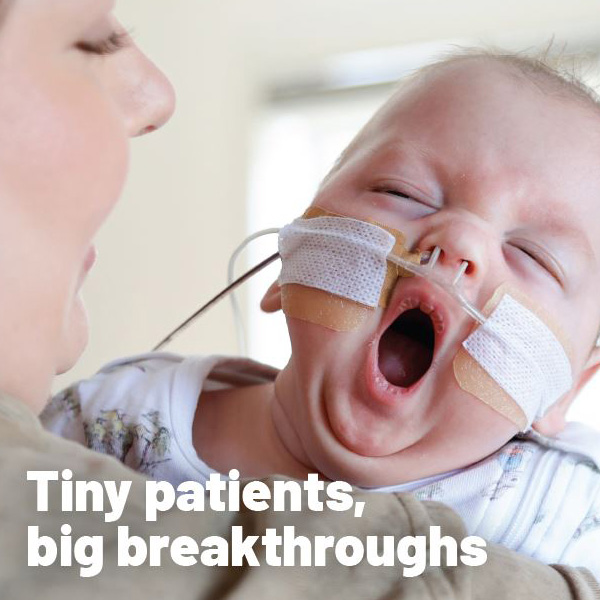Reducing preterm stillbirth
By Rob Clancy, staff writer. Reviewed by Kirstin Tindal

With a record of successfully changing the way many Australians give birth, a team from Hudson Institute now wants to change how we think about perinatal death, especially reducing preterm stillbirth.
Ninety per cent of stillbirths occur in the preterm period (before 37 weeks gestation), however current approaches to reducing perinatal death focus mainly on care in the final weeks of pregnancy.
Lead researcher, Dr Miranda Davies-Tuck has previously reduced stillbirth rates among mothers of south-Asian origin, by identifying that their optimum gestation period is a week shorter than average.
Preterm stillbirth experience
Working with PhD student Kirstin Tindal – whose own preterm stillbirth experience led her to this field of research – the team studied all births in Victoria between 2010 and 2018 to find the causes of preterm perinatal mortality.
Their findings, published in the Australia-New Zealand Journal of Obstetrics and Gynaecology, showed the single biggest cause of preterm stillbirths (almost 30 per cent) was congenital anomalies.
Meanwhile, congenital anomalies and spontaneous preterm births (sPTB) accounted for almost 70 per cent of preterm neonatal deaths (the death of a live born baby within 28 days of birth).
“Over the past decade, full-term stillbirth rates have reduced, but the overall stillbirth rate has remained at approximately six babies per day, meaning that preterm deaths are on the rise. More research on the causes of preterm death through mortality investigations is clearly needed to reduce preterm stillbirth,” she said.
“It’s clear from the statistics that reducing stillbirth in the preterm period is the key to reducing the rates of stillbirth overall in Australia,” Dr Davies-Tuck said.
Causes of preterm stillbirth
Now, Dr Davies-Tuck and her team are seeking to better understand the causes of preterm stillbirth (and neonatal deaths), and develop future directions to reduce preterm perinatal death among the broader population.
“This is why further investigation of congenital anomalies and sPTB is critical to developing interventions to reduce preterm perinatal mortality,” Mrs Tindal said.
The team is now actively seeking participants for their next study, examining whether early or undiagnosed gynaecological disorders might be the missing link in the origins of adverse pregnancy outcomes.
To participate in the ‘Menstruation, Pregnancy Outcomes and gynaecological Disorders’ (MPOD) survey, click here.
Collaborators | Gayathri Bimal, Vicki Flenady, Adrienne Gordon, Tanya Farrell
This research was supported by | Kirstin Tindal receives support through an Australian Government Research Training Program (RTP) Scholarship
Journal | Australia-New Zealand Journal of Obstetrics and Gynaecology
Title | Causes of perinatal deaths in Australia: Slow progress in the preterm period
View publication | https://doi.org/10.1111/ajo.13497
In this article
About Hudson Institute
Hudson Institute’ s research programs deliver in three areas of medical need – inflammation, cancer, women’s and newborn health. More
Hudson News
Get the inside view on discoveries and patient stories
“Thank you Hudson Institute researchers. Your work brings such hope to all women with ovarian cancer knowing that potentially women in the future won't have to go through what we have!”






